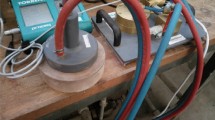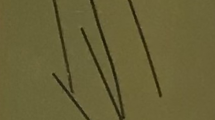Abstract
By using redispersible polymer powder (RPP) and carbon fiber (CF) to adjust the flexibility and electrical properties of the smart aggregate, a new kind of smart aggregate with Z type structure was proposed. The study shows that Z type aggregate is more sensitive to the feedback of external force than the prism aggregate in the same loading environment, and it indicates that Z type aggregate is more suitable for the research and application of concrete health monitoring. Although the incorporation of RPP would cause the compressive strength of the aggregates and the elastic modulus of hardened cement mortar to reduce slightly within the dosage of RPP by 2.25% because of the polymer film formed in the internal system, this would improve the deformability of the aggregates. In the early loading stage (in the first 60 seconds), the intelligent concrete specimens implanted with Z type smart aggregate do not show higher sensitivity as expected, although the resistance change rate changes a little bit more, the overall of it is still in balance. Adding RPP could improve the flexibility of smart aggregates exactly, and it plays an active role in prolonging the life of the smart aggregates. By implanting Z type aggregates the damage and failure of the concrete structure could be predicted accurately in this study. The results of this paper will help to promote further research and application of intelligent concrete.
Similar content being viewed by others
References
SUN Wei, YAN Shi, JIAO Li, et al. Monitoring Technology for Crack Damage of Concrete Structure Based on Piezoelectric Wave Method[J]. Engineering Mechanics, 2016, 30: 206–211 (in Chinese)
MENG Yanyu, YAN Shi. Statistical Algorithm for Damage Detection of Concrete Beams Based on Piezoelectric Smart Aggregate[J]. Transactions of Tianjin University, 2012, 18(6): 432–440
YAO Wu, ZHONG Wenhui. Calculation Model of Resistance for Carbon Fiber Reinforced Cement Composite[J]. Journal of the Chinese Ceramic Society, 2007, 35(7): 893–898 (in Chinese)
Bahador Sabet Divsholi, Yaowen Yang. Combined Embedded and Surface-bonded Piezoelectric Transducers for Monitoring of Concrete Stuuctures[J]. NDT&E International, 2014 (65): 28–34
C Kwok, K Sergey, Zhao KQ, et al. Cure-state Monitoring of Concrete and Mortar Specimens Using Smart Aggregates[C]. In: Conference Record- IEEE Instrumentation and Measurement Technology Conference, 2401: 304–308
Hughi D, Marzouk H. Crack Width Monitoring System for Reinforced Concrete Beams Using Pizeo-ceramic Sensors[J]. Journal of Civil Structural Health Monitoring, 2015, 5(1): 57–66
SUN Wei, YAN Shi, JIAN Shaofei, et al. Cracking Damage Process Monitoring of RCFrame Structure Based on Piezoelectric Ceramic Transducers[J]. Journal of Architecture and Civil Engineering, 2013, 30(4): 84–90 (in Chinese)
HE Haoxiang, CHEN Kui, YAN Weiming. Structural Seismic Damage Assessment Based on Wavelet Packet Transformation and Time-varying Frequencies[J]. Journal of Vibration and Shock, 2016, 35(7): 23–30 (in Chinese)
MAO Chenxi, ZHOU Wensong, OU Jinping. Damage Assessment Based on Wavelet Energy Transfer Function Spectrum[J]. Journal of Harbin Institute of Technology, 2011, 43(8): 130–134 (in Chinese)
LIU Xiaoyan, YAO Wu, WU Keru. Thermal-resistance Characteristics of Carbon Fiber Reinforced Cement-based Composites[J]. Journal of Hohai University (Natural Sciences), 2007, 35(2): 202–204 (in Chinese)
NAN Xueli, LI Xiaomin, LU Xuefeng, et al. Study of Conductive Mechanism of Carbon Fiber Filled Cement-based Composites[J]. Journal of Lanzhou University of Technology, 2012, 38(2): 114–119 (in Chinese)
ZHAO Xiaohua, LI Guobao, WANG Yulin, et al. Piezoresistivity of Carbon Fiber Reinforced Cement Matrix Composites[J]. Acta Materiae Compositae Sinica, 2011, 28(5): 214–219 (in Chinese)
WANG Yulin, ZHAO Xiaohua. Positive and Negative Pressure Sensitivities of Carbon Fiber Reinforced Cemented Matrix Composites and Their Mechanism[J]. Acta Materiae Compositae Sinica, 2005, 22(4): 40–46 (in Chinese)
PENG Hailong, GAO Peiwei, WU Xiaoqiang, et al. Effect of Graphite and Carbon Black on the Mechanical and Conductive Properties of Mortar with Carbon Fiber[J]. Journal of Materials Science & Engineering, 2013, 31(6): 907–910(in Chinese)
WANG Yulin, ZHAO Xiaohua, ZHU Deliang, et al. Study on Sensitivity of Piezoresistivity and Mechanism for Cement-based Composites with Carbon Fiber[J]. Bulletin of the Chinese Ceramic Society, 2013, 32(9): 1 817–1 821 (in Chinese)
ZHENG Zhihua, ZHU Sirong, LI Zhuoqiu. Temperature Sensitivities of Carbon Fiber and Carbon Fiber Interface in Epoxy[J]. Journal of Function Materials, 2012, 43(15): 2 079–2 082 (in Chinese)
HOU Zuofu, LI Zhuoqiu, WANG Jianjun. Research on the Electrical Reistance Variation of the Carbon Fiber Cement-based Composites[J]. Journal of Wuhan University of Technology, 2007, 29(7): 30–46 (in Chinese)
WANG Zhenjun, GAO Jie, WEI Yongfeng, et al. Influence of Carbon Fiber Surface Treatment Techniques on Toughness of Cement Based Composites[J]. Journal of Chang’an University (Natural Science Edition), 2015, 35(2): 26–30 (in Chinese)
Acknowledgements
The above-described investigation was supported by the Fund from Natural Science Foundation of Fujian Province (No. 2016J01241), the National Natural Science Foundation of China (No. 51608212) and the Science & Technology Pillar Program of Fujian Provincial Education Department (No. Z1425072). The authors also thank the anonymous reviewers for their invaluable comments and suggestions to improve the quality of the paper.
Author information
Authors and Affiliations
Corresponding author
Additional information
Funded by the Natural Science Foundation of Fujian Province (No.2016J01241), the National Natural Science Foundation of China (No.51608212), and the Science & Technology Pillar Program of Fujian Provincial Education Department( No.JA14024)
Rights and permissions
About this article
Cite this article
Wang, H., Mei, Z. Effect of CF and RPP on the Mechanical and Electrical Properties of Smart Aggregate. J. Wuhan Univ. Technol.-Mat. Sci. Edit. 33, 437–444 (2018). https://doi.org/10.1007/s11595-018-1842-7
Received:
Accepted:
Published:
Issue Date:
DOI: https://doi.org/10.1007/s11595-018-1842-7




